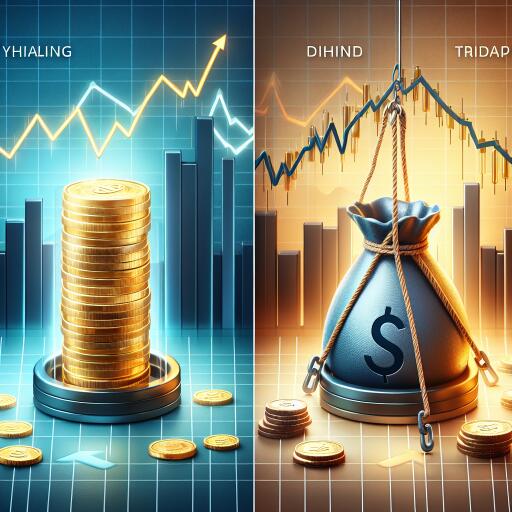Are High-Yield Dividend Stocks Worth the Hype or Just Yield Traps?
As the economic landscape continues to be marred by uncertainties, many investors are turning their focus towards high-yield dividend stocks. The promise of consistent dividend payouts becomes particularly appealing during periods of market volatility, acting as a beacon for those seeking returns in a possibly receding economy.
Yet, the recent communication from the Federal Reserve, indicating the unlikelihood of a rate cut in the near future due to ongoing inflation concerns, has put additional pressure on US equities. This scenario underscores the importance of vigilance among investors towards high-yield dividend stocks, prompting a deeper examination into the viability and sustainability of such investments.
Potential Risks in High-Yield Dividends
Let’s delve into a few examples that highlight the necessity for caution when exploring high-yield dividend opportunities:
Kohl’s Corporation: A Retail Sector Warning?
Kohl’s Corporation, with its impressive 8.35% dividend yield, might initially seem like an investor’s dream. However, the retail sector’s woes, highlighted by declining foot traffic and competitive pressures from e-commerce giants, suggest a potential risk to the sustainability of such dividends. A year-over-year net sales drop and a significant decline in comparable sales only add to the concern, pointing towards potential challenges in maintaining its dividend payouts.
CVS Health Corporation: The Healthcare Hegemon’s Hurdles
CVS Health Corporation is another prime example, offering a 3.93% dividend yield. Despite its dominant position in the healthcare retail space, the company faces regulatory challenges and shifts in consumer preferences. A substantial decline in share prices, coupled with a noticeable dip in adjusted operating income and diluted earnings per share, raises questions about its long-term dividend sustainability.
Manulife Financial Corporation: Stability Meets Economic Volatility
Manulife Financial’s increased dividends might catch the eye of many investors seeking income. However, economic instability and interest rate changes pose significant threats to the financial sector’s dividend reliability. A projected drastic revenue drop suggests that even firms considered stable might face difficulties in maintaining consistent dividend payments.
Innovative Opportunities in Real Estate Investment
Despite concerns surrounding traditional high-yield dividend stocks, the real estate sector continues to offer promising income investment opportunities. An innovative platform, supported by notable backing from Jeff Bezos, is simplifying access to the single-family rental market. This platform allows individuals to invest in fractional shares of rental properties, combining monthly rental income with potential property value appreciation, without the burdens of direct property management.
For instance, an investment in The Breckenridge, a property generating significant monthly rental income, represents an accessible entry into real estate investment. This method not only provides an attractive alternative to traditional stock investments but also leverages the consistently high demand for housing.
Conclusion
While high-yield dividend stocks may seem like attractive avenues for income during uncertain times, it’s imperative for investors to approach these opportunities with a critical eye. Understanding the underlying challenges facing companies offering high dividends is crucial to avoid potential yield traps. Simultaneously, exploring alternative investment opportunities, such as real estate, could diversify income sources and reduce reliance on the traditional stock market.
As always, conducting thorough research and possibly seeking advice from financial professionals is recommended before making any investment decisions, ensuring that one’s investment strategy aligns with their financial goals and risk tolerance.
